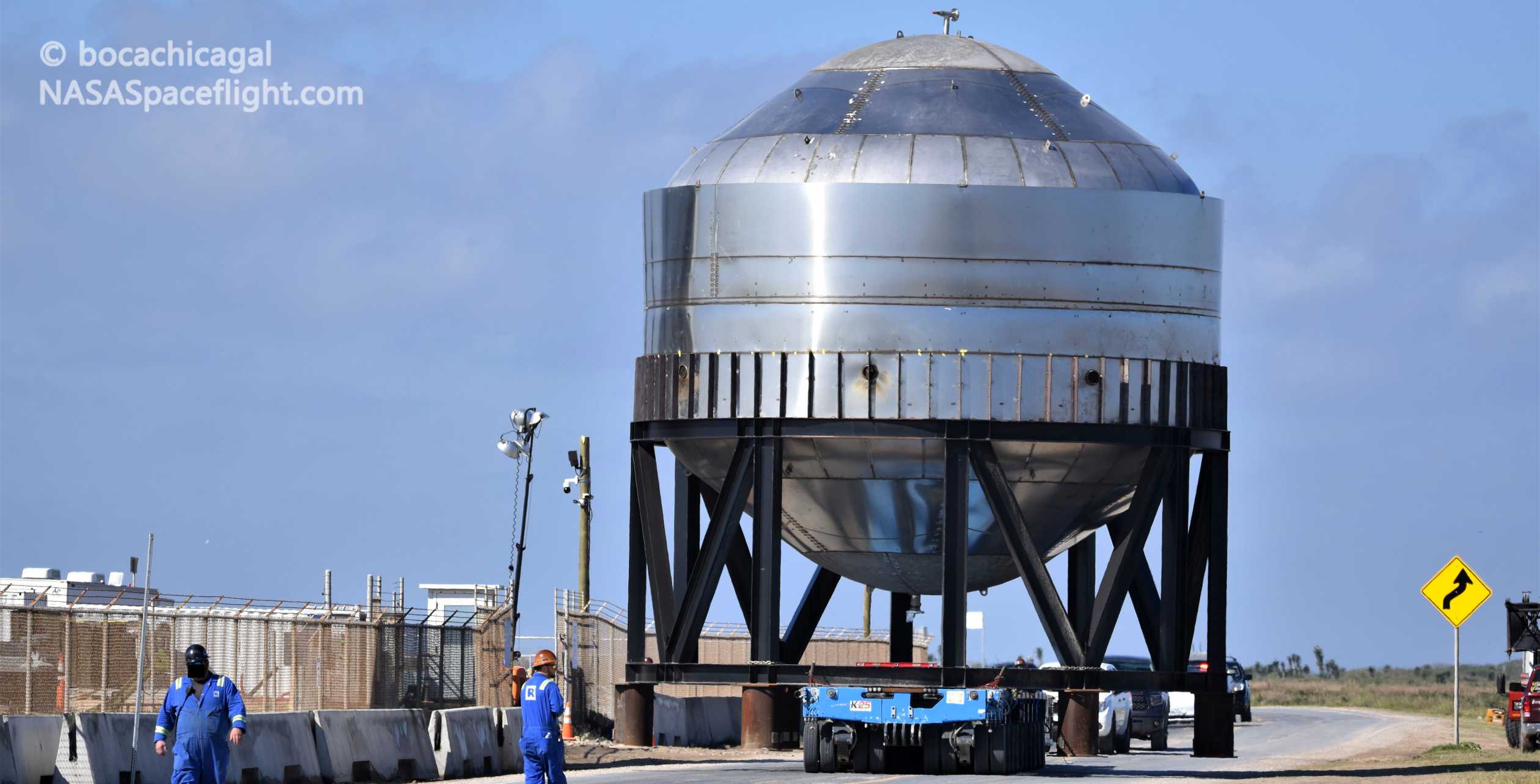
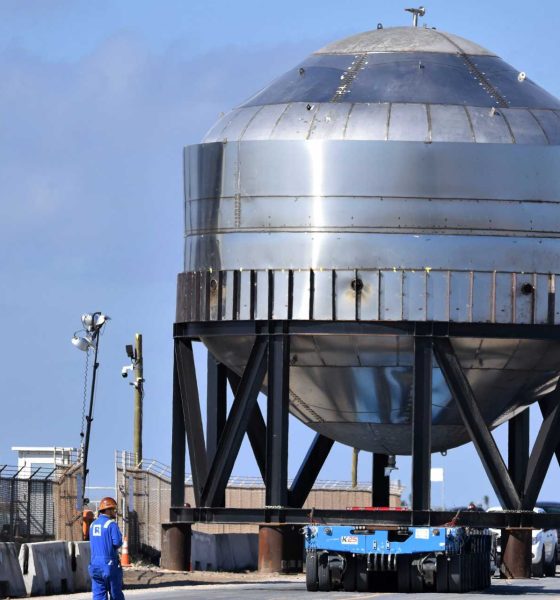
News
SpaceX is ready to build the first Starship destined for space after latest tests
After a busy several days of rocket hardware testing, Elon Musk says that SpaceX may be ready to build the first Starship prototype destined for space.
According to Musk, one test in particular – performed in South Texas just yesterday – is an encouraging sign that SpaceX’s Starship team is becoming increasingly competent at building the massive steel parts that will ultimately make up the generation launch vehicle. For SpaceX, the particular skills and expertise needed to precisely and consistently build a launch vehicle – let alone a rocket as large and complex as Starship – are quite a bit different from those it has mastered with Falcon 9, Falcon Heavy, and Dragon.
A lot of the expertise – particularly engineering talent, countless lessons-learned, and insight into reusability – is directly transferable from Falcon rockets to SpaceX’s Starship/Super Heavy program. Where it really isn’t transferable, however, is in the methods required to actually build the steel subcomponents that must ultimately be assembled together to form the rocket’s upper stage and booster. As a result, SpaceX has spent more than a year focused on building, testing, scrapping, improving, and re-testing any number of critical Starship components. Over the last four weeks (and last few days in particular), that testing has come to a head and Elon Musk believes the results have opened the door for SpaceX to begin building its first space-bound Starship prototypes.
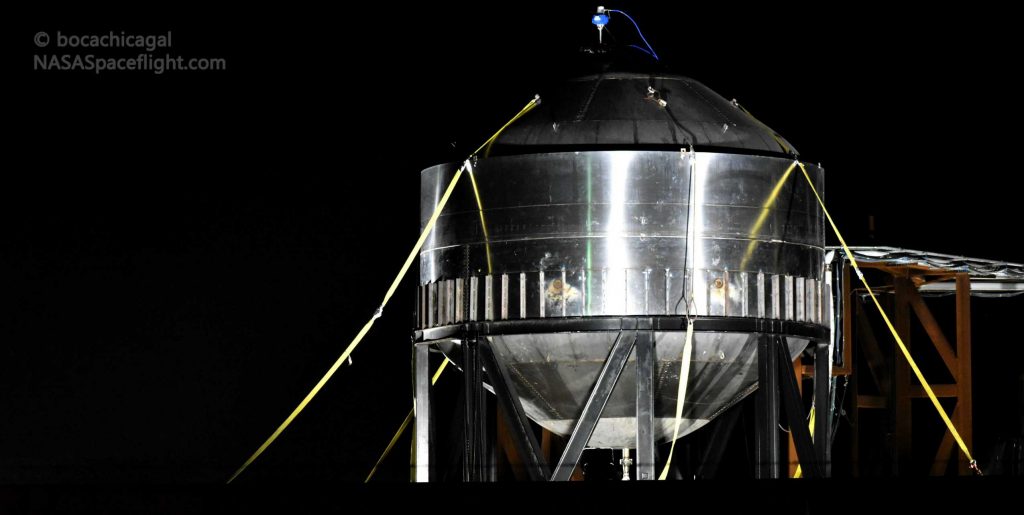
SpaceX’s latest round of full-scale Starship hardware tests began just 10-20 days ago, depending on how one counts. Back around the start of the new calendar year, SpaceX began rapidly integrating two new Starship bulkheads and two cylindrical steel rings (barrel sections), ultimately delivering a finished ‘test tank’ after just 20 days of work. On January 10th, scarcely 24 hours after the two halves of the test tank were welded together, SpaceX sent the Starship test tank to its nearby launch pad and pressurized it with water until it quite literally burst.
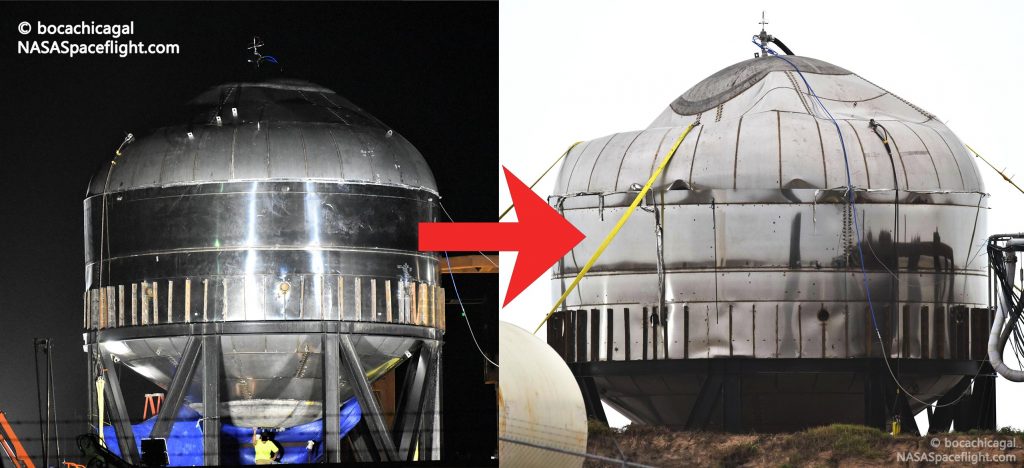
Musk tweeted the results of that intentional test-to-destruction just a few hours after it was completed, revealing that SpaceX’s upgraded production and integration techniques enabled the tank to survive pressures almost 20% greater than the minimum Starships will need to perform orbital launches.
“Critically, the tank reached a maximum sustained pressure of 7.1 bar (103 psi), 18% more than the operating pressure (6 bar/87 psi) Musk says Starship prototypes will need to begin orbital test flights. At 7.1 bar, the test tank would have been experiencing an incredible ~20,000 metric tons (45 million lbf) of force spread out over its interior surfaces — equivalent to ~20% of the weight of an entire US Navy aircraft carrier. Perhaps even more impressive, that same Starship test tank was built from almost nothing extremely quickly, going from first weld to said pressurization test in just three weeks (20 days).
With relatively minor improvements to welding conditions and the manufacturing precision of Starship rings and domes, Musk believes that SpaceX can reliably build Starships and Super Heavy boosters to survive pressures greater than 8.5 bar (125 psi), guaranteeing a safety margin of at least 40%. Even a minor improvement of ~6% would give Starship a safety margin of 125%, enough – in the eyes of most engineering standards committees – to reasonably certify Starships for orbital test flights.”
Teslarati.com — January 12th, 2020
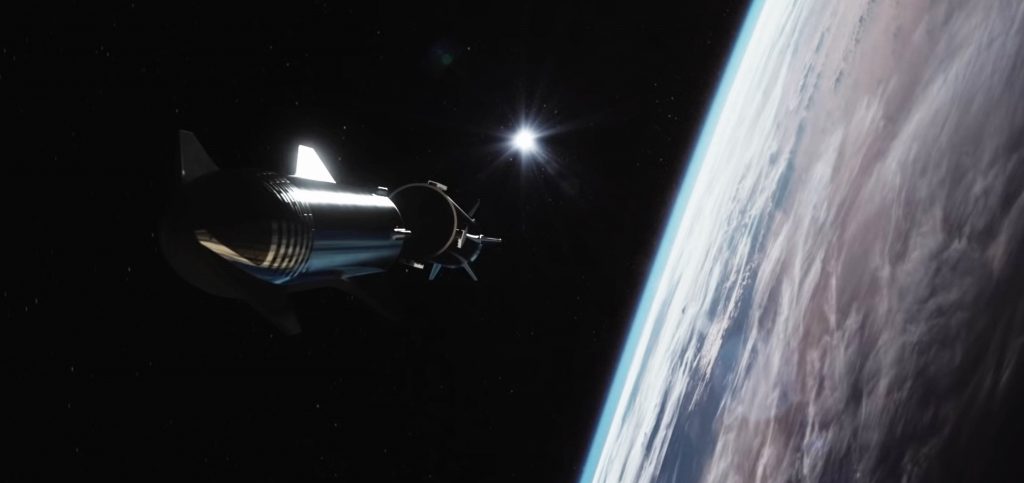
Test Tank 2: The Tankening
This brings us to January 27th, a little over two weeks after SpaceX completed and burst the first standalone Starship test tank. Over the last week, SpaceX has quickly assembled a second Starship test tank, using a few clearly new methods and parts, as well as a brand-new tent built by the same company that Tesla used for Fremont’s fourth General Assembly line.
In the last few days, two new bulkheads and steel rings came together to form Starship test tank #2, which was subsequently prepped for transport and moved about a mile down the road to SpaceX’s launch facilities on the morning of January 27th. Scarcely a few hours later, well before anyone was paying close attention for test activities, Elon Musk took to Twitter to reveal that the second tank had already been subjected to a pressure test with water. That second tank reportedly survived up to 7.5 bar, an improvement of about 6% compared to the first tank.
This time, however, the tank wasn’t actually catastrophically destroyed by the pressure test, instead developing a leak around the weld connecting the two halves that lead SpaceX to back off. Musk says that that presumably small leak will now be repaired, after which the same tank will be tested again but with one significant difference. Musk says that Test Tank #2’s second pressure test will be performed with a cryogenic liquid — most likely liquid nitrogen (LN2).

In replies after his reveal, Musk noted that he believed the second test tank could perform significantly better if pressurized with a cryogenic liquid. That’s because certain types of steel – particularly those SpaceX has chosen for Starship – exhibit something known as cryogenic hardening when exposed to extremely cold temperatures, producing steel that can be dramatically stronger by some measures.
Ultimately, as mentioned above, a tank pressure safety margin of 125% is the minimum most engineering standards provide for any given orbital-class launch vehicle. At 7.5 bar, even under the very unlikely assumption that Starship tanks will not see even a marginal strength increase at cryogenic temperatures, SpaceX’s second Starship test tank has officially hit that 125% safety margin. As Musk himself noted on Monday, he is now confident that SpaceX can immediately start building the first Starship destined for spaceflight and further revealed that two of that particular Starship’s three tank domes are already nearing completion.
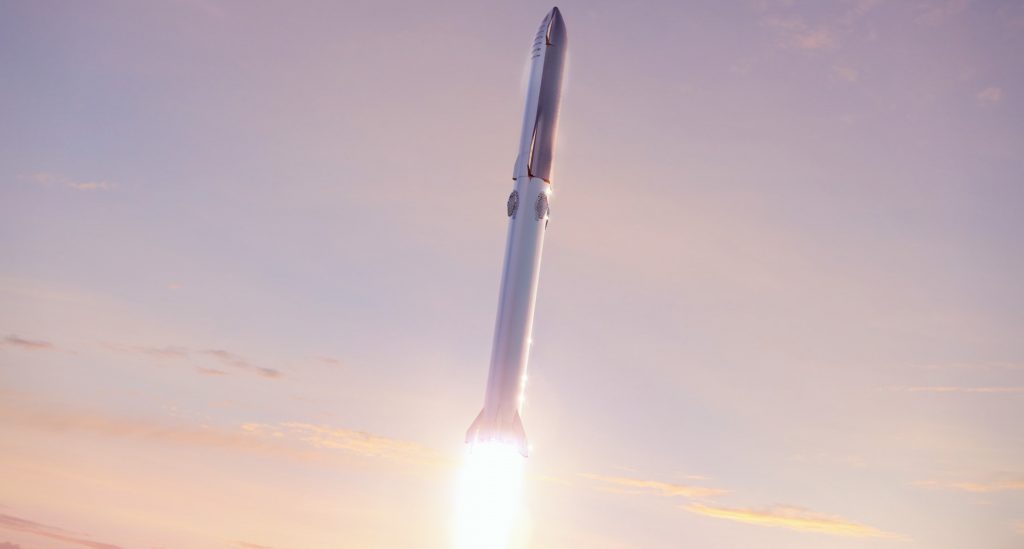
Known as Starship SN01 (serial number 01), there’s a strong possibility that the massive spacecraft will never reach higher than a 20 km (12.5 mi) flight test SpaceX intends to perform. The company’s rapidly changing strategy may very well mean that SN01 – now ‘go’ for production – could also support suborbital spaceflight testing and maybe even the first orbital Starship launch, although orbital launches will require a Super Heavy booster. Elon Musk, for one, has already christened Starship SN01 an “orbital vehicle”.
Check out Teslarati’s Marketplace! We offer Tesla accessories, including for the Tesla Cybertruck and Tesla Model 3.

News
Tesla Model Y Standard Long Range RWD launches in Europe
The update was announced by Tesla Europe & Middle East in a post on its official social media account on X.

Tesla has expanded the Model Y lineup in Europe with the introduction of the Standard Long Range RWD variant, which offers an impressive 657 km of WLTP range.
The update was announced by Tesla Europe & Middle East in a post on its official social media account on X.
Model Y Standard Long Range RWD Details
Tesla Europe & Middle East highlighted some of the Model Y Standard Long Range RWD’s most notable specs, from its 657 km of WLTP range to its 2,118 liters of cargo volume. More importantly, Tesla also noted that the newly released variant only consumes 12.7 kWh per 100 km, making it the most efficient Model Y to date.
The Model Y Standard provides a lower entry point for consumers who wish to enter the Tesla ecosystem at the lowest possible price. While the Model 3 Standard is still more affordable, some consumers might prefer the Model Y Standard due to its larger size and crossover form factor. The fact that the Model Y Standard is equipped with Tesla’s AI4 computer also makes it ready for FSD’s eventual rollout to the region.
Top Gear’s Model Y Standard review
Top Gear‘s recent review of the Tesla Model Y Standard highlighted some of the vehicle’s most notable features, such as its impressive real-world range, stellar infotainment system, and spacious interior. As per the publication, the Model Y Standard still retains a lot of what makes Tesla’s vehicles well-rounded, even if it’s been equipped with a simplified interior.
Top Gear compared the Model Y Standard to its rivals in the same segment. “The introduction of the Standard trim brings the Model Y in line with the entry price of most of its closest competition. In fact, it’s actually cheaper than a Peugeot e-3008 and costs £5k less than an entry-level Audi Q4 e-tron. It also makes the Ford Mustang Mach-E look a little short with its higher entry price and worse range,” the publication wrote.
Elon Musk
Elon Musk’s xAI bets $20B on Mississippi with 2GW AI data center project
The project is expected to create hundreds of permanent jobs, dramatically expand xAI’s computing capacity, and further cement the Mid-South as a growing hub for AI infrastructure.

Elon Musk’s xAI plans to pour more than $20 billion into a massive new data center campus in Southaven, Mississippi, marking the largest single economic development project in the state’s history.
The project is expected to create hundreds of permanent jobs, dramatically expand xAI’s computing capacity, and further cement the Mid-South as a growing hub for AI infrastructure.
xAI goes MACROHARDRR in Mississippi
xAI has acquired and is retrofitting an existing facility in Southaven to serve as a new data center, which will be known as “MACROHARDRR.” The site sits near a recently acquired power plant and close to one of xAI’s existing data centers in Tennessee, creating a regional cluster designed to support large-scale AI training and inference.
Once completed, the Southaven facility is expected to push the company’s total computing capacity to nearly 2 GW, placing it among the most powerful AI compute installations globally. The data center is scheduled to begin operations in February 2026.
Gov. Tate Reeves shared his optimism about the project in a press release. “This record-shattering $20 billion investment is an amazing start to what is sure to be another incredible year for economic development in Mississippi. Today, Elon Musk is bringing xAI to DeSoto County, a project that will transform the region and bring amazing opportunities to its residents for generations. This is the largest economic development project in Mississippi’s history,” he said.
xAI’s broader AI ambitions
To secure the investment, the Mississippi Development Authority approved xAI for its Data Center Incentive program, which provides sales and use tax exemptions on eligible computing hardware and software. The City of Southaven and DeSoto County are also supporting the project through fee-in-lieu agreements aimed at accelerating development timelines and reducing upfront costs.
Founded in 2023 by Elon Musk, xAI develops advanced artificial intelligence systems focused on large-scale reasoning and generative applications. Its flagship product, Grok, is integrated with the social media platform X, alongside a growing suite of APIs for image generation, voice, and autonomous agents, including offerings tailored for government use.
Elon Musk highlighted xAi’s growth and momentum in a comment about the matter. “xAI is scaling at an immeasurable pace — we are building our third massive data center in the greater Memphis area. MACROHARDRR pushes our Colossus training compute to ~2GW – by far the most powerful AI system on Earth. This is insane execution speed by xAI and the state of Mississippi. We are grateful to Governor Reeves for his support of building xAI at warp speed,” Musk said.
Elon Musk
Tesla AI Head says future FSD feature has already partially shipped

Tesla’s Head of AI, Ashok Elluswamy, says that something that was expected with version 14.3 of the company’s Full Self-Driving platform has already partially shipped with the current build of version 14.2.
Tesla and CEO Elon Musk have teased on several occasions that reasoning will be a big piece of future Full Self-Driving builds, helping bring forth the “sentient” narrative that the company has pushed for these more advanced FSD versions.
Back in October on the Q3 Earnings Call, Musk said:
“With reasoning, it’s literally going to think about which parking spot to pick. It’ll drop you off at the entrance of the store, then go find a parking spot. It’s going to spot empty spots much better than a human. It’s going to use reasoning to solve things.”
Musk said in the same month:
“By v14.3, your car will feel like it is sentient.”
Amazingly, Tesla Full Self-Driving v14.2.2.2, which is the most recent iteration released, is very close to this sentient feeling. However, there are more things that need to be improved, and logic appears to be in the future plans to help with decision-making in general, alongside other refinements and features.
On Thursday evening, Elluswamy revealed that some of the reasoning features have already been rolled out, confirming that it has been added to navigation route changes during construction, as well as with parking options.
He added that “more and more reasoning will ship in Q1.”
🚨 Tesla’s Ashok Elluswamy reveals Nav decisions when encountering construction and parking options contain “some elements of reasoning”
More uses of reasoning will be shipped later this quarter, a big tidbit of info as we wait v14.3 https://t.co/jty8llgsKM
— TESLARATI (@Teslarati) January 9, 2026
Interestingly, parking improvements were hinted at being added in the initial rollout of v14.2 several months ago. These had not rolled out to vehicles quite yet, as they were listed under the future improvements portion of the release notes, but it appears things have already started to make their way to cars in a limited fashion.
Tesla Full Self-Driving v14.2 – Full Review, the Good and the Bad
As reasoning is more involved in more of the Full Self-Driving suite, it is likely we will see cars make better decisions in terms of routing and navigation, which is a big complaint of many owners (including me).
Additionally, the operation as a whole should be smoother and more comfortable to owners, which is hard to believe considering how good it is already. Nevertheless, there are absolutely improvements that need to be made before Tesla can introduce completely unsupervised FSD.








